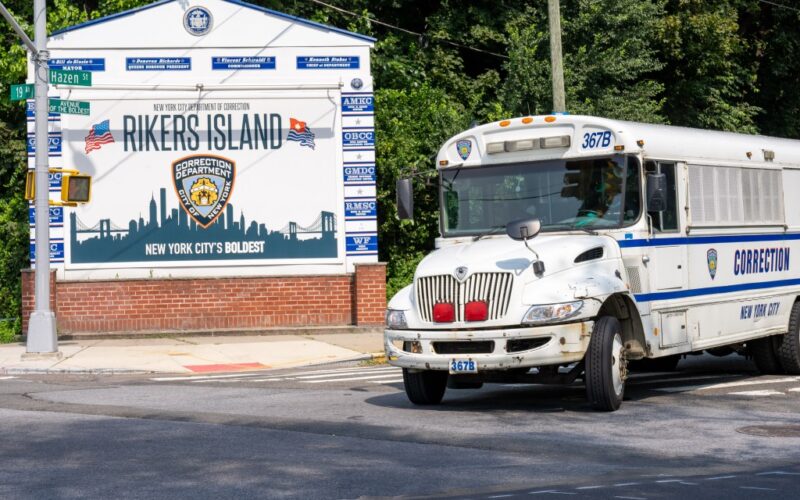Twelve people died in city jails this year — three over a two-week period — already exceeding the number who died last year. Despite a decade under court monitoring during which five commissioners and two mayors have attempted to reduce violence on Rikers Island, violence has only increased there.
This miserable record led Manhattan Federal Judge Laura Taylor Swain to order a court takeover of city’s jails in May, and to deny the city’s motion to reconsider that order stating, “Defendants are not entitled to ‘take a second bite at the apple’ by repackaging evidence that the court already considered… (violence) is still significantly higher than the already unconstitutional levels present in 2016 when defendants entered into the consent judgment.”
Swain was right to order a receivership and deny the city’s motion. But even though conditions on Rikers demand swift action, the judge should hold off on appointing a receiver and finalizing the receivership’s structure until Zohran Mamdani takes office, especially given how different his views on carceral issues are from Mayor Adams.
A receivership shifts authority from elected officials to judicially empowered oversight — a last resort when other measures are exhausted. That’s why it took a decade of suffering, including 42 deaths during Adams’ term, before Swain ordered the takeover.
She rightly sought to negotiate the receivership with city leaders but these negotiations have produced structural obstacles. For one thing, under the judge’s order the city will retain a mayoral-appointed commissioner (as well as a court monitor) alongside the receiver who “shall have the authority to direct the Commissioner” implying the commissioner still runs the department, albeit somewhat under the receiver’s supervision.
The receiver, in turn, will be partially selected by the current federal court monitor — Steve Martin — whose work has failed to improve conditions over the last decade at a cost to city taxpayers of $26.1 million. Martin will report to the court on the receiver’s progress and evaluate when the receiver’s work is compliant with the court’s orders. For this chaotic structure to succeed, the judge plaintively used the word “collaboration” 26 times in her decision.
Rikers is hard enough to fix when everyone knows who the boss is; nebulous lines of authority are a recipe for disaster.
Former Giuliani administration jails commissioner Michael Jacobson called the structure “unbelievingly confusing and unclear.” Bloomberg administration correction chief Martin Horn agreed saying, “I think the judge tried to split the baby.” So, including me, that’s jail commissioners under three mayors seriously questioning this circular triumvirate.
Another vital matter is a receiver’s ability to abrogate union contracts if they interfere with running a constitutional jail. Correctional unions — who have a close relationship with Adams — have bargained for unlimited sick leave, something far too many abuse. When I was commissioner, there were times when a third of the department’s staff were out “sick” on long weekends. A receiver must be able to eliminate that overly generous benefit, as well as other giveaways that unnecessarily restrict the ability to reduce violence.
So why doesn’t Swain appoint a robust receiver with the authority to get the job done? To not run afoul of the law surrounding receiverships, the judge may feel she cannot go too far in stripping the city of authority. In similar jail litigation in Mississippi, a receivership was partly overturned when county lawyers appealed.
Adams’ lawyers have fought hard to water down Swain’s order, even suggesting that the current commissioner become the receiver. This could mean that the outgoing Adams administration’s commissioner could outlast the incoming mayor!
But that negotiating posture could change. When I was correction commissioner in 2021, I proposed that the city acquiesce to a strong receivership. That’s what happened in Chicago where county officials negotiated a lone receiver — no monitor or commissioner — who truly improved conditions for incarcerated youth. That idea found purchase among some of Mayor de Blasio’s advisors but came too late to be effectuated. With a new administration coming on board soon it is worth seeing if a more effective agreement can be struck.
A receiver is no panacea. One important element is cooperation with local government, particularly given that a receivership is meant to last only until conditions improve. As eager as many are to see Rikers fixed, it’s a wasted opportunity to finalize this important decision with current leadership which seems more bent on scoring legal victories than humanitarian ones.
Schiraldi is a visiting fellow with the Pinkerton Foundation and former commissioner of New York City’s Departments of Correction and Probation.








